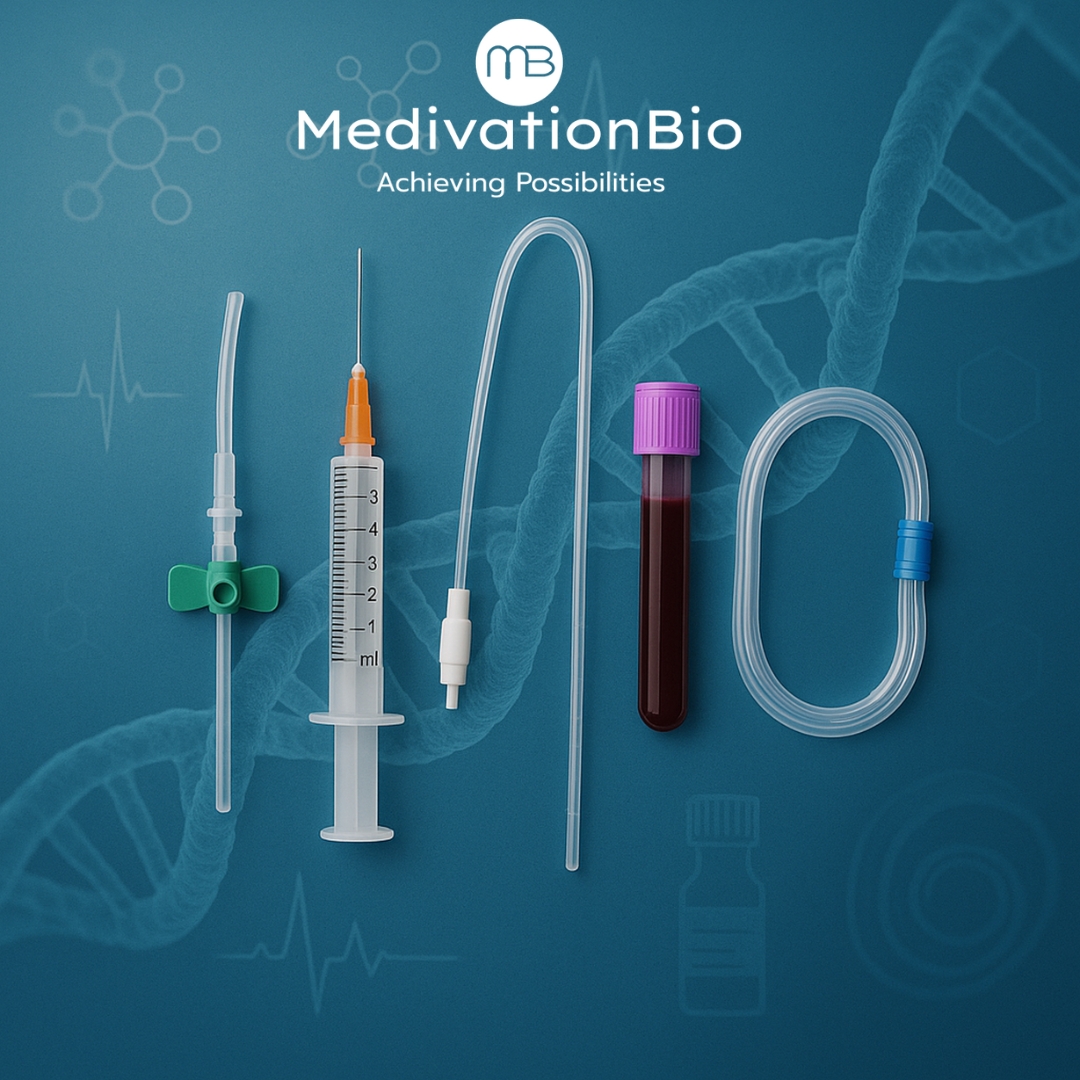Blog Details

Silent Partners in Healthcare: Medical Devices That Save Lives Every Day
When we think of lifesaving innovations in healthcare, our minds often jump to advanced imaging machines, surgical robots, or AI-powered diagnostics. Yet, behind every breakthrough lies a set of simple, often-overlooked tools that make the delivery of care possible. These are the silent partners of healthcare devices so common they blend into the background, but without them, even the most advanced therapies would struggle to succeed.
Intravenous cannulas, syringes, thoracic drainage catheters, blood collection tubes, and high-pressure tubing may not grab headlines, but they quietly save lives every day.
Why Medical Devices Matter
Hospitals and clinics depend on reliable access, safe diagnostics, and efficient therapies. While high-tech devices enable complex procedures, it is the everyday tools that support them:
- An IV cannula establishes life-saving access during emergencies.
- A syringe ensures vaccines and medications reach the right dose, every time.
- A drainage catheter relieves pain and prevents complications after thoracic surgery.
- A blood collection tube preserves samples for accurate diagnosis.
- High-pressure tubing withstands stress during cardiac procedures.
Each device represents precision and trust, not because it is flashy, but because it works silently, reliably, and consistently.
IV Cannulas: The Lifeline in Emergencies
An IV cannula is one of the most frequently used hospital devices. In trauma units, it provides rapid access for fluids and transfusions; in wards, it supports antibiotics, hydration, or chemotherapy. Modern cannulas, built with biocompatible materials, kink resistance, and safety-lock features, not only protect patients but also reduce risks for healthcare workers.
In pediatric or geriatric care, finer gauge cannulas ensure delicate veins are respected, minimizing trauma. While simple in appearance, they are often the first step in stabilizing a critically ill patient.
Syringes: Accuracy in Every Drop
Syringes are so common that their importance is often overlooked. Yet, a poorly designed syringe can mean inaccurate dosing or painful injections. Innovations like precise graduations, low dead-space tips, and ultra-sharp needles ensure that every injection is safe, accurate, and as comfortable as possible.
For large-scale vaccination programs or chronic conditions like diabetes, this accuracy directly translates into public health impact and patient trust.
Thoracic Drainage Catheters: Quiet Relief in Critical Care
Conditions like pleural effusion or chest trauma can be both painful and life-threatening. Thoracic drainage catheters are the quiet enablers that relieve pressure, drain fluids, and restore breathing. Their atraumatic tips, kink-resistant tubing, and sterile packaging minimize complications and accelerate recovery.
For patients, the relief is immediate; for clinicians, these devices ensure safety and procedural success in some of the most delicate interventions.
Blood Collection Tubes: Protecting Diagnostic Accuracy
Accurate diagnosis begins with reliable samples. Blood collection tubes, equipped with specific additives and vacuum seals, preserve the integrity of blood for tests ranging from routine hemograms to advanced molecular assays.
A tube that prevents clotting at the wrong time or avoids contamination may never be noticed by the patient, but it is central to ensuring treatment decisions are correct. With millions of tests performed daily, these silent tools uphold the reliability of entire healthcare systems.
High-Pressure Tubing: Reliability Under Stress
In cardiology and interventional radiology, procedures like angioplasty depend on devices that can withstand extreme pressures. High-pressure tubing ensures contrast delivery and balloon inflation occur smoothly, with minimal risk of rupture. Its durability is a silent guarantee that delicate procedures are completed safely.
Though invisible to patients, this tubing often carries the weight of critical care interventions.
Aligning Innovation With Everyday Needs
The real strength of these devices lies in how seamlessly they integrate into care. Manufacturers such as MedivationBio design them with precision engineering, biocompatible materials, and safety features that prioritize both patient well-being and clinician confidence. By meeting global standards while addressing local healthcare needs, such tools prove that even the smallest devices can have the greatest impact.
Final Thoughts
Healthcare isn’t only about advanced machines or complex therapies. It is equally about the tools that quietly make healing possible tools that don’t seek attention but enable every success story in the hospital.
From the IV cannula that starts an infusion, to the syringe that delivers a vaccine, to the catheter that restores breathing, these silent partners in healthcare remind us that sometimes the simplest devices save the most lives.
